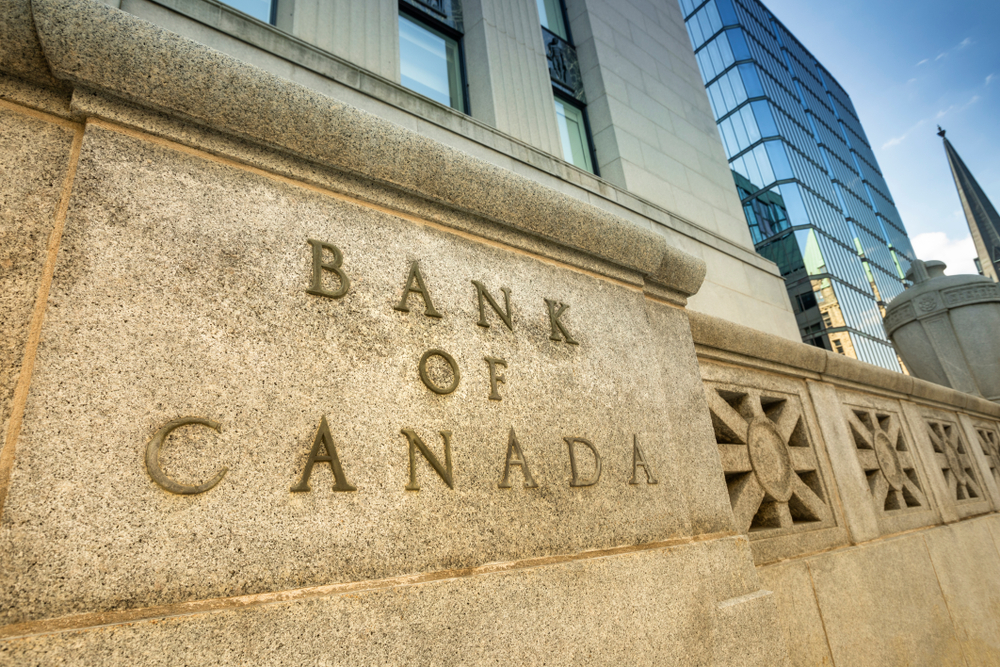
The Bank of Canada is expected to stay on hold for now even after the U.S. Federal Reserve cut its interest rate Wednesday for the first time since the global financial crisis.
The Fed’s decision, which kept the door open for more easing, came at a time when the U.S. economy is still in solid shape. The reduction was widely expected.
Fed chairman Jerome Powell said in his explanation that the overall goal of the move was to sustain the U.S. economic expansion. He also underlined concerns about slowing global growth, trade tensions and stubbornly low inflation.
The Fed’s first cut since 2008 was a significant policy step for Canada’s biggest trading partner, though one experts say is unlikely to pull Canada’s central bank out of its holding pattern in the coming months.
The Bank of Canada has sent signals that the Canadian economy is very much on its own path and, at least in the short term, has no reason to follow any move by the Fed to lower rates. Canadian economic growth has shown signs of re-emerging after it nearly stalled in late 2018 and early 2019.
CIBC chief economist Avery Shenfeld said even though the global outlook is weakening there’s less pressure on the Bank of Canada to follow the Fed because it didn’t hike its rate as much over the last decade.
“For the time being the Bank of Canada is decidedly on hold,” Shenfeld said in an interview after the Fed’s decision.
He noted, however, that a second cut by the Fed in the coming months could apply unwelcome upward pressure on the Canadian dollar. Canada, he said, would prefer a lower loonie to help its exports in a slowing global environment.
“So, eventually the Bank of Canada could be dragged into a rate cut, but the timing of that is probably not until 2020,” Shenfeld said.
Moving forward, the Fed said as it considers the future path of interest rates it “will act as appropriate to sustain the expansion.”
“The Fed left the door open for further monetary stimulus and we believe this will come in the form of one more ‘insurance’ cut in September,” TD economist Sri Thanabalasingam wrote in a note to clients.
Powell had previously telegraphed to markets that the rate cut was likely on the way to address slowing global growth and trade wars. U.S. inflation has been running below target and central banks can drop interest rates as a way to lift consumer prices.
Overall, the U.S. economy has been resilient — unemployment numbers are as low as they’ve been in decades and American consumer confidence has looked strong.
Ahead of Wednesday’s rate decision, Deloitte chief economist Craig Alexander said the expected cut by Powell shouldn’t be viewed as a sign of a larger economic downturn on the way.
“I don’t think the economic indicators, at this point, are flashing that a recession is upon us,” Alexander said.
He doesn’t see any urgency for the Bank of Canada to follow the Fed’s lead.
“The two central banks didn’t move in lockstep with rates going up, so they don’t need to move in lockstep with rates coming down,” Alexander said.
The Bank of Canada should also be careful about “expending ammunition” that could be used later to deal with a downturn, he said.
Alexander added that a rate cut by the Fed could bring benefits to trade-dependent Canada by bolstering U.S. and foreign demand. It could also put additional upward pressure on the Canadian dollar.
At the July meeting, the Bank of Canada kept its interest rate at 1.75 per cent for a sixth-straight policy meeting.
The bank, however, showed no urgency to make a policy change even though Powell had already signalled his intention to lower the U.S. rate.
Carolyn Wilkins, the Bank of Canada’s senior deputy governor, explained at the time that the U.S. and Canada were at different points in the economic cycle.
“The fact that Canada is picking up while the U.S. economy is slowing sounds like a divergence. In fact, it’s a process of convergence,” said Wilkins, noting Canada’s interest rate was already lower than the Fed’s.
“The United States is slowing to a more sustainable pace, while Canada is moving back up to its trend growth… By the second half of this year, growth should be similar in both economies as they converge on their respective potential level of activity.”